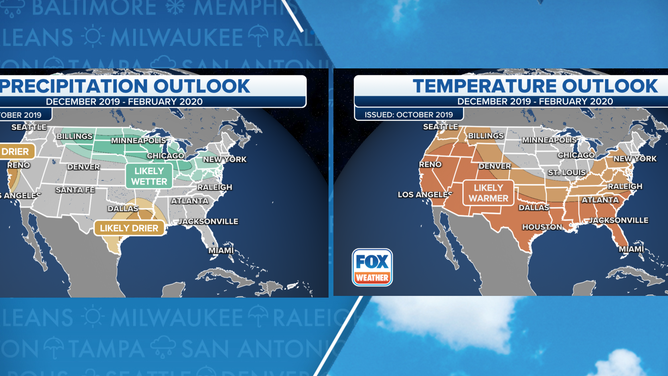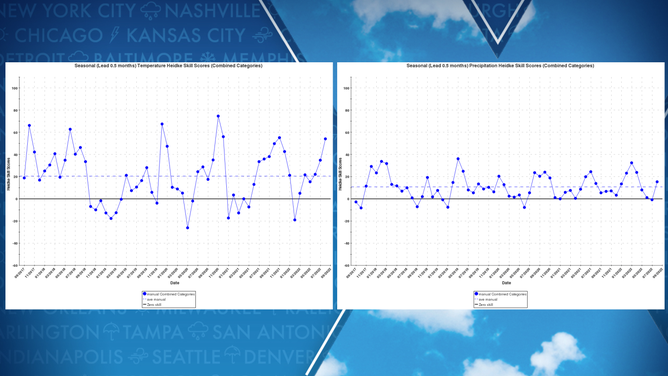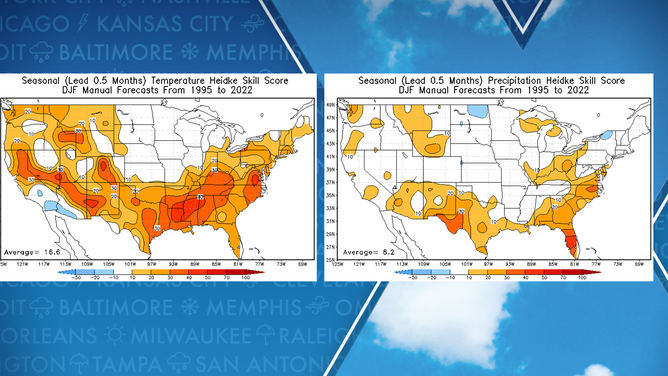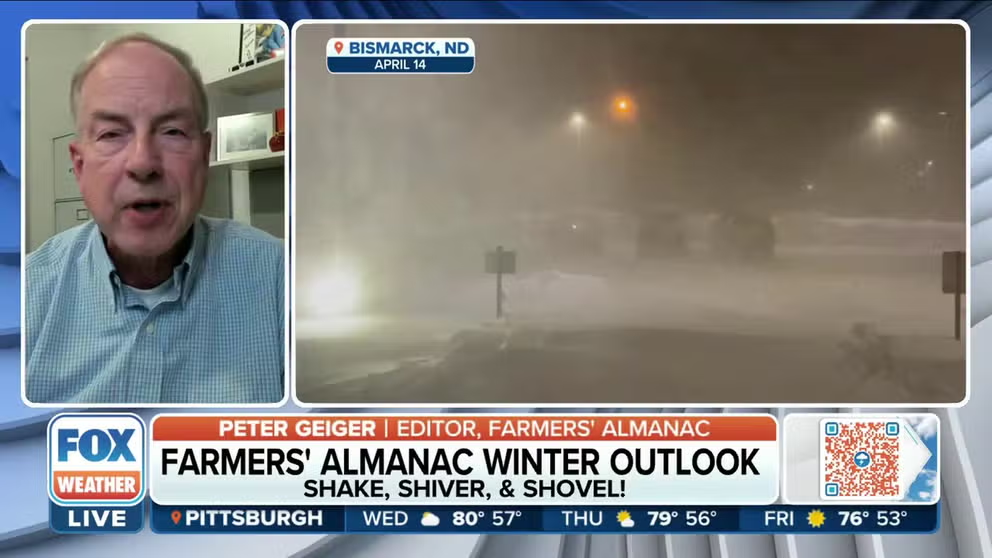Winter prediction scoreboard: How on-target are seasonal outlooks?
Meteorological winter begins on December 1 and lasts until March 1
Farmers' Almanac says parts of US 'hibernation zone' this coming winter
Peter Geiger, Farmers' Almanac Editor, predicts a harsh winter for Plains states as well as the Northeast.
The U.S. is in the time of the year when winter seasonal outlooks are popular among inquisitive minds, but when it comes to accuracy, the forecasts have yet to hit a perfect score.
The National Oceanic and Atmospheric Administration’s Climate Prediction Center annually releases seasonal outlooks that show the probability of temperatures and precipitation ranking below, at or above average.
The NOAA maps are easy to read, but unlike forecasts, the outlooks are only meant to be used as guidance until an event is foreseeable in the shorter term.

Winter outlook for 2019-20
(FOX Weather)
After each season, the CPC regularly verifies outlooks using the Heidke Skill Score (HSS).
The agency says a score of 100 means an outlook was perfect, and anything above zero reflects some accuracy.
On the flip side, a result below zero indicates there were more inaccuracies than precisions in the outlook.
Since 1995, many of the seasonal temperature outlooks have ranked between zero and 40 on the HSS. Only three times has the HSS come in at 80 or above, depicting nearly pinpoint accuracy.
Temperature outlooks for the agency appear to be more accurate than precipitation outlooks, which generally rank between zero and ten.

Heidke Skill Score (HSS) of NOAA outlooks
(FOX Weather)
The CPC reports the 2021-22 winter temperature outlook came in at a score of nearly 21, and the precipitation outlook scored just over a 13.
The agency said the numbers were above zero, indicating that it was more accurate to look at their outlooks than a seasonal average to determine what the winter season would bring.
An outlook that forecasters likely aren’t proud of is in the winter of 2020-21. Both temperature and precipitation outlooks came in below zero, meaning, in hindsight, it would have been more accurate for people to rely on climatological averages than on NOAA’s outlooks.
Forecasters blamed the botched forecasts on a significant disruption of the polar vortex that brought an Arctic blast across the country in February of 2021.
FARMER’S ALMANAC DECLARES PART OF US ‘HIBERNATION ZONE’ WITH PREDICTED ‘GLACIAL, SNOW-FILLED’ WINTER
Areas of the country have a higher accuracy than others when it comes to the temperature and precipitation outlooks.
Since tracking began in 1995, the Southeast has tended to be depicted more accurately for temperature anomalies than areas of the Midwest and the Southwest.

Heidke Skill Score average map
(FOX Weather)
In precipitation outlooks, areas of the Northeast and the Upper Midwest are seemingly prone to winding up opposite of what forecasters expect during the pre-season run-up.
The Gulf Coast is once again the undeclared winner, appearing more times under an accurate outlook than any other region of the country.


